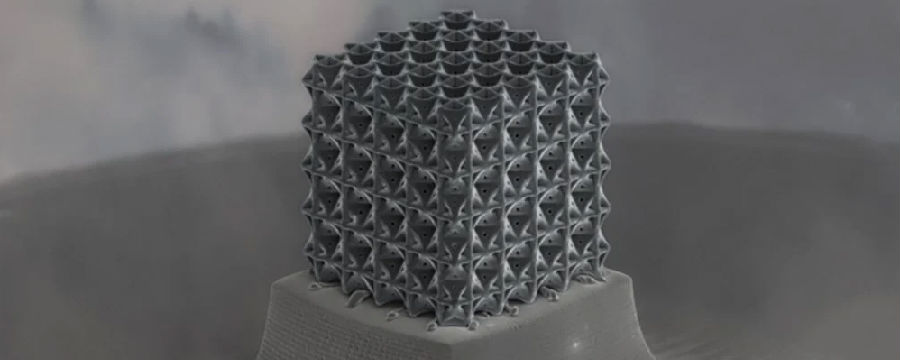(单词翻译:单击)
Scientists have found a new way to structure carbon at the nanoscale, making a material that's superior to diamond on the strength-to-density ratio.
科学家发现了一种新的方法构造纳米级碳,做出了一种在强度密度比上优于钻石的物质。
While the tiny carbon lattice has been fabricated and tested in the lab, it's a very long way off practical use. But this new approach could help us build stronger and lighter materials in the future - which is something that's of great interest to industries such as aerospace and aviation.
虽然做出了这种微碳晶格,在实验室中进行了测试,但还不能用于实际应用。但这种新的方法能帮我们在未来构造出更坚固更轻的物质,航空航天等行业对此会非常感兴趣。
What we're talking about here is something known as a nanolattices - porous structures like the one in the image above that's made up of three-dimensional carbon struts and braces. Due to their unique structure, they're incredibly strong and lightweight.
我们讨论的是纳米晶格,这种多孔结构如上图所示,是由三维碳素支柱和支撑构成的。由于其结构独特,所以异常坚固轻便。
Usually these nanolattices are based around a cylindrical framework (they're called beam-nanolattices). But the team has now created plate-nanolattices, structures based around tiny plates.
通常这种纳米晶格是以圆柱形框架为基础的(我们称之为束纳米晶格)。但这个团队现在创造出了平板纳米晶格,是基于微型平板的结构。

This subtle shift may not sound like much, but the researchers say it can make a big difference when it comes to strength.
这种微妙的变化可能听起来没什么,但研究人员说这对强度有很大影响。
Based on early experiments and calculations, the plate approach promises a 639 percent increase in strength and a 522 percent increase in rigidity over the beam nanolattice approach.
基于早期的实验和计算,这种平板结构与束纳米晶格相比,强度会提高639%,硬度会提高522%。
"Scientists have predicted that nanolattices arranged in a plate-based design would be incredibly strong," says materials scientist Cameron Crook, from the University of California, Irvine (UCI).
加利福尼亚大学尔湾分校材料科学家Cameron Crook说:“科学家预测平板设计的纳米晶格会异常坚固。”
"But the difficulty in manufacturing structures this way meant that the theory was never proven, until we succeeded in doing it."
“但以这种方式制造结构的困难程度说明这一理论从未被证实过,我们得成功做出来才行。”


